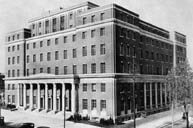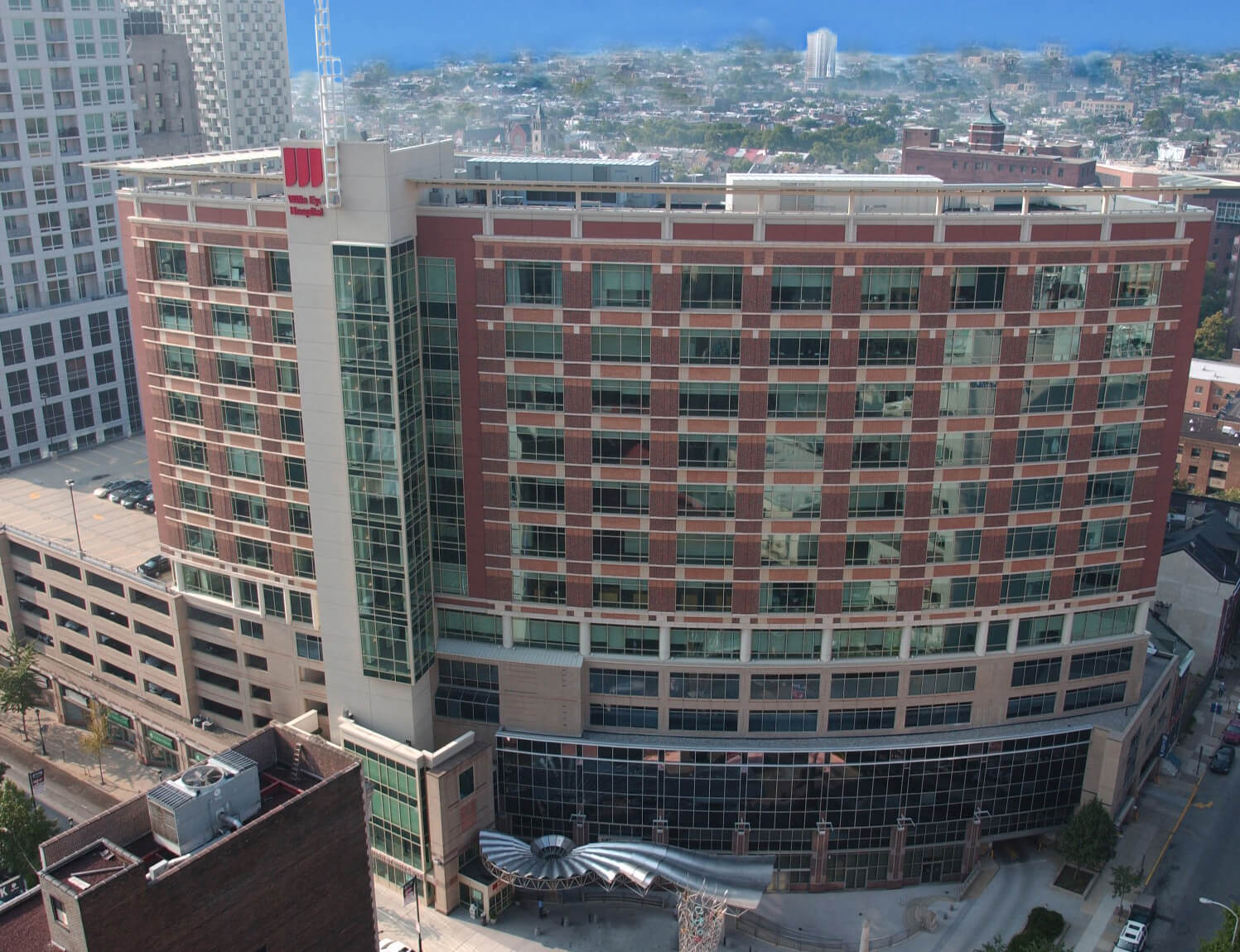Wills Eye was established in 1832 through a bequest of Quaker merchant James Wills to the City of Philadelphia. We are a non-profit specialty hospital whose clinical expertise and sophisticated diagnostic and treatment procedures make it a worldwide referral center.
Before Wills Eye was founded in 1832, the care of eye diseases was just one of many general surgical responsibilities. By establishing Wills Eye as a specialty hospital from its inception, we developed momentum early as a pioneer in the prevention and treatment of eye disease and played a vital role in establishing ophthalmology as a separate branch of medicine in the United States.


The first Wills Eye Hospital, located on the southwest corner of 18th and Race Streets in Philadelphia (opposite what is now Logan Circle), opened on March 3, 1834. The 70-bed facility was designed by Thomas Ustick Walter.
By the early 1900s, Wills Eye had outgrown its quarters. In 1932 the hospital relocated to a new building at 16th and Spring Garden Streets. The new hospital expanded inpatient bed capacity to 120, increased outpatient service areas, and provided additional conference and teaching facilities.
Then in the 1960s, Wills Eye began to develop subspecialty services for particular diseases or parts of the eye. These services now include: Cataract & Primary Eye Care, Contact Lens, Cornea, Glaucoma, Neuro-Ophthalmology, Oculoplastic and Orbital Surgery, Oncology, Pathology, Pediatric Ophthalmology and Ocular Genetics, Retina and Telemedicine.


In 1972, Wills Eye affiliated with Jefferson Medical College of Thomas Jefferson University and serves as Jefferson's Department of Ophthalmology. All Jefferson medical students receive their basic eye instruction and training at Wills Eye. We expanded once again in 1980 to a new facility at 9th and Walnut Streets.
As Wills Eye approached the 21st century, a new state-of-the-art, outpatient facility was constructed at 840 Walnut Street, directly across the street from its inpatient facility. The new building opened in June 2002 and is considered one of the most advanced eye centers in the world. The eight-story building delivers a comprehensive range of eye care services in a modern, comfortable setting.
The new facility houses a hospital, physician offices, clinics and a state-of-the-art center for ophthalmic education and research.
